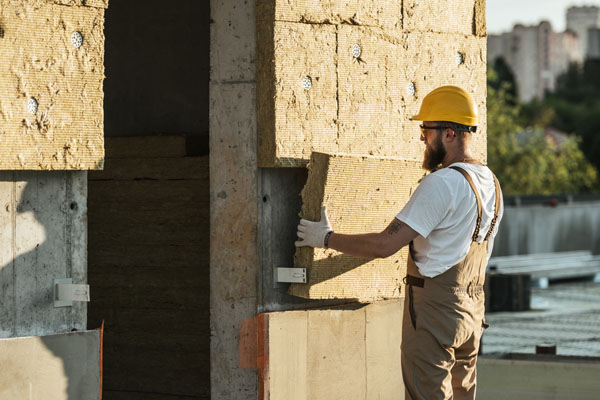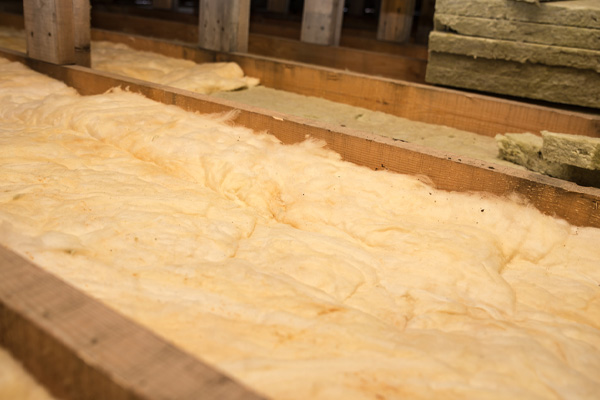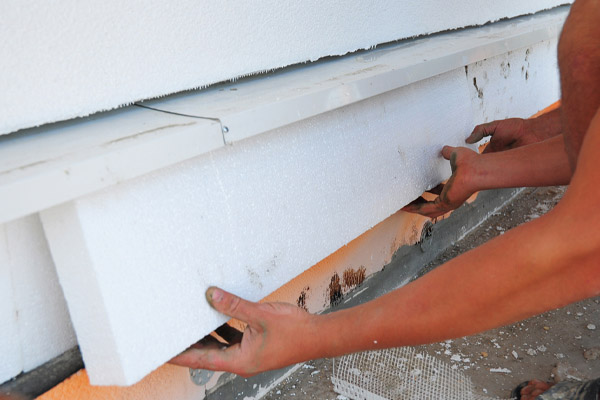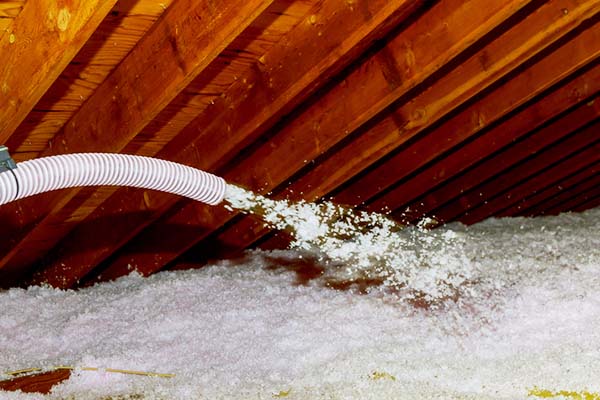What Are The Types of Thermal Insulation in Colorado?

Insulating a home requires planning. Figure out which parts to cover and what insulation material to use. Every situation is different. Get familiar with the types of thermal insulation to find the right choice for each case. For the best results, consult with expert insulation contractors to prevent DIY insulation mistakes and maximize performance.
Types of Thermal Insulation in Fort Collins Colorado
Contents
Keep reading to explore common thermal insulation types.
Blanket Thermal Insulation

Blanket insulation is the most widely available type of insulation in the US. You can get it in batts or rolls. These contain countless strands of flexible fiber from glass, plastic, minerals, cellulose, cotton, or sheep’s wool.
Use blanket insulation to fill unfinished floor joists, attic rafters, and wall studs. This insulation comes pre-cut, but you can opt to buy them cut to order. Fiberglass batts range from R-2.9 to R-4.3 per inch, depending on the density and material.
Concrete Block Insulation
Use concrete block insulation to build walls that effectively repel heat. The cores can either hold additional support or insulation material, with the latter increasing the R-value. These blocks can also form the foundation of the structure.
Choose between polystyrene bead concrete blocks and rigid foam blocks. The former has polystyrene beads embedded into the existing blocks. Meanwhile, the latter has rigid foam inserts in otherwise empty cores. The R-value of these blocks can be up to 10x higher than standard concrete.
Foam Board

Foam boards are versatile options. You can place them on outer walls to serve as exterior wall sheathing, particularly around your foundation and basement. They also perform well as interior wall and attic insulation. Lastly, consider these for low-sloped ceilings.
These thick panels provide exceptional thermal resistance of around R-8 per inch — double the value you get from batts. A 5-inch panel, therefore, offers R-40, which should be good enough to shield your home from extreme weather. They can achieve this through materials like polyisocyanurate, polyurethane, and polystyrene.
Insulating Concrete Forms
Regular walls do not offer much protection against heat. ICFs are poured concrete walls that can boost insulation by up to R-20. Add these to lower energy consumption and monthly bills. Simply connect them using plastic ties. Consult an expert before using these, however, because they are not as strong as standard concrete blocks. One way to increase strength is by inserting steel rods into the forms before pouring concrete. Watch out for insects and high humidity when using foam boards as wall forms. Seek out options with insecticide treatment and waterproofing to prevent interior rot. As with all insulation, it is always best to work with a professional for best results.
Loose-fill & Blown-in Insulation

Many homes have empty air pockets that provide no thermal protection. You can remedy the situation through loose-fill or blown-in insulation. Use these to fill the spaces and maximize their potential. Experts often choose these for attics because of the abundance of empty nooks and crannies waiting for insulation.
Batts and rigid foams are difficult to install in hard-to-reach areas. For example, you may have small gaps between walls. Use blown-in insulation instead to cover the surface without breaking a sweat. It is also a good strategy for spaces with unusual shapes and surfaces. Loose-fill insulation can be made from cellulose, fiberglass, polystyrene, or mineral wool.
Reflective Systems
This form of insulation reduces radiant heat through the reflection of light. It does not lower heat conduction, so we cannot provide R-values. Think about how hot your car gets when you park it in an area without shade. Owners will often cover the windshield and windows with a reflective material to minimize interior heating.
In homes, reflective systems can protect attics from the heat of the sun. Use this insulation to decrease air conditioning costs by as much as 10%. It can also go on unfinished walls, ceilings, floors, and garages. It works best in regions that experience high temperatures. It is less suitable for colder areas because they do not usually rely on ACs for comfort.
Rigid Fiber Insulation
Ducts are crucial in distributing conditioned air around the house. If they are uninsulated, heat can escape or penetrate with ease. It lessens the efficiency of the HVAC system. In the summer, the air that blows into your room might not be as cold as it should be. You may have to change the settings and make the AC work harder for relief. The same can happen during winter.
Insulate the ductwork with rigid fiber boards. You can choose insulation made from fiberglass or mineral wool. Prefab boards range from 1 to 2.5 inches. Wrap these around the duct walls to get protection as high as R-5.4 per inch. Use weld pins, clips, or washers for mounting.
Spray Foam
Spray foam is a liquid that expands to fill gaps around your home. It is the most versatile form of insulation because you can use it anywhere, at any part of the construction timeline. Small spray cans in hardware stores are insufficient for big jobs. Also, most DIY spray foam insulation jobs are poorly carried out, leading to bigger issues in the long run. If you want high-quality foam and proper installation, call professional installers. They use specialized machines to cover large areas quickly while ensuring even thickness. Once cured, you can cut or paint over it. Open-cell foams are cheaper, but closed-cell options have higher R-values.
Structural Insulated Panels (SIPs)
If you are still in the construction phase, you can choose structural insulated panels for the walls, floors, ceilings, and roofs. These building materials can reduce energy costs by up to 14% with their R-3 per inch rating. Inside these panels are polystyrene or iso foam.
They live up to their name. These structural panels have a high strength-to-weight ratio. Steel reinforcements are unnecessary. These airtight SIPs can even block noise for a more peaceful home. They also protect against flames with fire-retardant exteriors.
Conclusion
As you can see, insulation comes in many forms. Compare their properties such as R-value, durability, price, and versatility. Use the type that suits your needs. Unsure about the right choice? Talk to insulation experts to create a solid plan.
Thermal Insulation Fort Collins CO
To receive the many benefits that proper insulation has to offer, work with a professional insulation company for the best results. They can consider all of the necessary factors that will improve efficiency, comfort, and more. Ascend Construction specializes in insulation removal and installation, energy conservation, energy audits, whole house fan installations, and more in Fort Collins, Colorado, and the neighboring areas.

Contact Ascend Construction for a free consultation today. We can provide you with practical solutions to address the problem areas in your Fort Collins home. All of our services are affordable, and our work is guaranteed. Click here to contact us, or click the button below to give Ascend Construction a call. We offer free, no-obligation, in-home consultations.
Ascend Construction
4115 County Road 19
Fort Collins, CO, 80524
(970) 420-5495